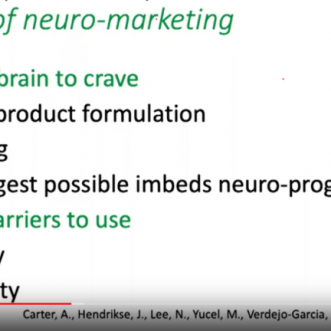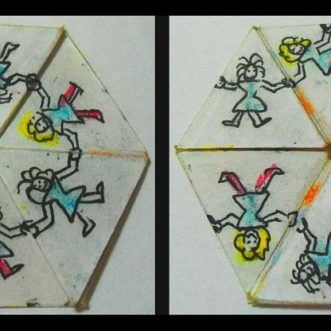
Doh!
I’ve been wondering why my blog posts have not been going out.
Doh!
It was because I’d paused the campaign to check something over the weekend, and forgot to unpause it.
Apologies.
I hope you missed me.
Thank you for putting up with me.

I’ve been wondering why my blog posts have not been going out.
Doh!
It was because I’d paused the campaign to check something over the weekend, and forgot to unpause it.
Apologies.
I hope you missed me.
Thank you for putting up with me.

You know your clients are individuals. With individual personalities, character traits and preferences. You know that what delights one won’t delight another.
You also know that you want them all to be delighted by your service. You want an equality of result, and you recognise that using exactly equal means won’t deliver that.
In the same way, you know that your people are individuals, with individual personalities, character traits and preferences. That what delights one won’t delight another. Yet you want all of them to be delighted to work here, because that’s how they are motivated to delight your clients. You want an equality of result, and you recognise that using exactly equal means won’t deliver that.
“But how do I keep things consistent?”
By setting boundaries for behaviour, a floor for what has to be done, then giving your people free play to experiment and explore what delight means to them and to clients.
Doing exactly the same thing every time is what machines do. Cookie-cutting is an efficient way to produce to a minimum standard at scale, but it’s rarely a delightful experience.
Equality doesn’t have to mean treating everyone the same, it can be about doing whatever it takes to produce the same outcome. And if a delighted human is your desired outcome, delighted, free-playing humans are your best means of achieving it.

…and when the next step feels hairy, it’s good to know there’s someone that has your back.

Just because you’ve got someone over the threshold, doesn’t mean you stop guiding. The destination may be obvious to you, but is it to your client?
The next step is difficult to take if you don’t where it is, or where it leads.

I loved Seth Godin’s blog post yesterday.
In it he talks about the gap in customer service between one person in your team and another – or even between the same person on a good day and a bad day – and how you might address it.
One approach is to nail everything down so much that delivery of the experience is exactly the same, no matter who is giving it. Another is to leave it to a great person doing the job, giving them “room to shine. With all the variability that entails.”
“It’s almost impossible to have both.”
Almost, but not impossible.
Hire great people, give them a Promise of Value and a Customer Experience Score, that creates a floor, but no ceiling, then set them free to interpret it in their own way.
Variations on a theme. The best of both worlds.
Do you know how your clients feel after they have worked with you?
Maybe not, but it’s probably fairly straightforward to find out – you can simply ask.
Do you know, or can you imagine how they felt before they discovered that you were their solution?
You can probably remember what prospects told you, or what you observed when you met.
Do you think there are other people feeling like this right now?
Probably.
What else do these other people need to feel in order to know that you are the solution for them?
This is the feeling that will help them to cross the threshold and commit to a journey with you.
How can you give them that feeling?
HT to Bev Costoya for that brilliant question.

A Promise of Value, properly articulated, is quite a comprehensive thing. As a kind of definition of your culture, it’s too big to reduce to an easily applicable ‘mission statment’. That’s why you have a Customer Experience Score – it embodies your Promise of Value in the actions your business takes on a day-to-day basis.
There are times though, when the Score can’t help, because the situation in front of you has never happened before, and could not have been foreseen. Often these times are crises, when your people don’t have the time to delve into the Promise of Value for guidance. They need something more immediate, concrete and practical, less open to interpretation.
This is where an Unbreakable Promise comes into its own. It’s another brilliant idea from Brian Chesky which I’ve incorporated into my Define Promise process.
Here’s how it works:
Once you have your Promise of Value defined, in all its expansive glory, identify who the key stakeholders for your business are. Obvious stakeholders are clients or customers, your team, your investors, your suppliers etc, but you can define as few or as many as you want.
Then for each stakeholder group, define a promise you will never break, based on what’s already in your Promise of Value.
Make that promise as concrete and measurable as you can. Someone in your team needs to be able to tell in a split second whether it is about to be broken, and the kind of action they should take to prevent that. It’s usually easier to phrase it negatively – “we will never…“, rather then positively “we will always…”, but whatever works for you.
Then make sure that all your different Unbreakable Promises are in accord with each other – that by keeping one, you don’t break another.
Finally, make sure everyone knows them off by heart.
Unbreakable Promises are not easy to make, and there’s no guarantee they won’t be broken. It’s impossible to predict every eventuality. But having them is a great way to set the boundaries of interpretation of your Customer Experience Score.
Discipline makes daring possible.

I’m hesitating to put this out there, but I saw this model in a video a couple of weeks ago, and since then I can’t get it out of my head. Once you’ve seen it, you see its application everywhere.
The focus of Dr Ifland’s talk is processed food, but the model applies to other forms of consumption too – alcohol, tobacco, gambling, social media.
It’s scary stuff.
And yet, I’m thinking, could you use this knowledge for good? To create ‘good’ addictions?
Hmmm. I don’t know. What do you think?
P.S. one of the best ways to fight an addiction to processed food is to cook your own from scratch, and it doesn’t need to be anywhere near as hard as you might think.

Most of the time, I model what happens in a given interaction from a single perspective – that of the organisation whose Score I’m drafting. Most of the time, that’s been OK.
But when the organisation you’re working with is actually a collection of organisations each playing different Roles, this isn’t good enough.
For example, what looks like ‘placing an order’ from one side is ‘create a consignment’ on the other. The only way to keep clear about what has to happen in order for each party to keep its Promise, is to model it in these terms.
It feels awkward and clunky, but clarity trumps elegance, every time.
Here’s a funky illustration of what I mean.
Makes me want to make one.

Nobody should have to think about admin. Admin is unexciting, unrewarding, work-about-work that very few people enjoy doing.
Yet, if you want to measure performance, predict future demand and workloads, allocate resources effectively, you need some way of collecting the information you need.
The answer is to make collecting information a side-effect of doing the job.
When you drive your car, the action of the wheels traveling over the ground updates your odometer. You don’t have to create a separate spreadsheet to keep track of how many miles you cover per trip or over the lifetime of the car. Instead some basic information (the number of tyre revolutions) is collected and used to trip a counter that shows the distance covered. The information is collected purely as a side-effect of doing the job. Combined with another counter on the drive shaft it tells you your speed. So two simple side-effects give you critical information.
If you want to spend less time on admin and more time making and keeping promises for the people you serve, you need to design admin-as-a-side-effect into your Customer Experience Score.
How?
Well, it helps to start by writing your Score from the perspective of what you actually want things to happen, rather than from the perspective of how you document and track what happens.
To take a big example, it would be easy to think about creating and using a building in terms of sketching ideas, drawing up plans, creating a list of materials and quantities, but that isn’t what’s really happening. What’s really happening is more like this:

Process diagram of the life of a building
The sketches are how you track the results of your imagination, the plans are how you track your designs and feed them to the people who will construct. These things are admin, and by thinking about what is really going on, you can see better where in the process they should be created, and who by, as a result of doing the job.
This simplifies monitoring and prediction, because they can become matters of simple counting, combined with some basic parameters of the business, such as available person-hours. If you can find ways to automate this, then none of your people ever need to fill in a timesheet again. You can free them to concentrate on what really matters to the people you serve, at less cost to yourself.
Work-about-work is a waste of time and talent. It’s time we got rid of it.